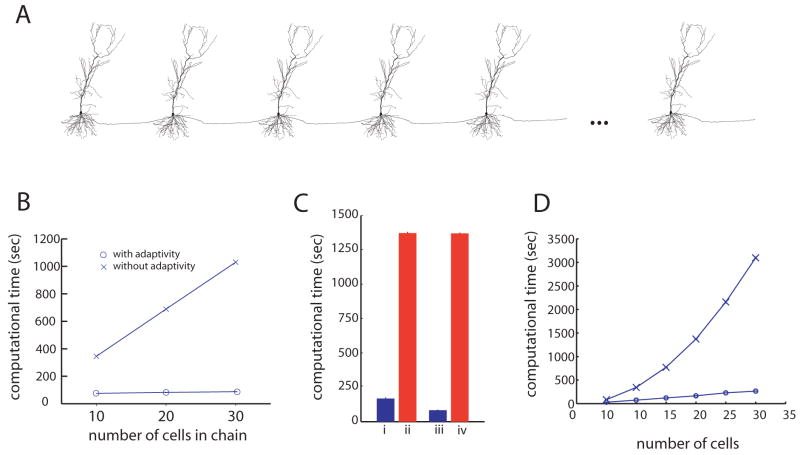Figure 7.
The adaptive algorithm is highly efficient for simulating chains of cells connected by synapses. A, The chains are constructed by copying the morphology of one cell as many times as needed. B, Computing times for the algorithm with and without adaptivity (O and X respectively), on simulations of 10, 20 and 30 cells. In each simulation a synaptic-like input was injected into the first cell causing it to fire and initiate an action potential that travels down the length of the chain. Each simulation was run until 50 ms, just enough time for ten cells to fire. C, Computing times for the algorithm with and without adaptivity (blue and red bars, respectively), for simulations of a chain of 20 cells connected by strong synapses (4 nS). In each simulation, a synaptic-like input was injected into the first cell causing it to fire and initiate an action potential that travels down the length of the chain. In (i) and (ii) the synaptic connections were all the same strength, resulting in reliable propagation of activity down the length of the chain. In (iii) and (iv) the 10th synapse was made weaker, (1 nS), resulting in propagation failure at the 10th cell in the chain. Each simulation was run until 100 ms, just enough time for all 20 cells to fire if the propagation is reliable. If propagation is not reliable, the adaptive algorithm is faster, while the performance of the non-adaptive method is unchanged. D, Computing times for simulating chains of various lengths with and without adaptivity (O and X respectively). In each case the simulation was run just long enough for activity to propagate down the entire length of the chain. Each simulation used an “on” trigger of 0.015 and an “off” trigger of 0.007.

